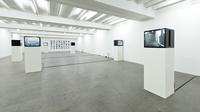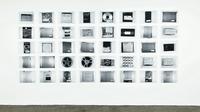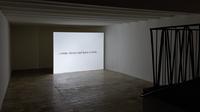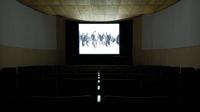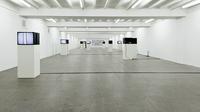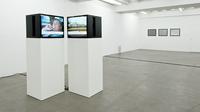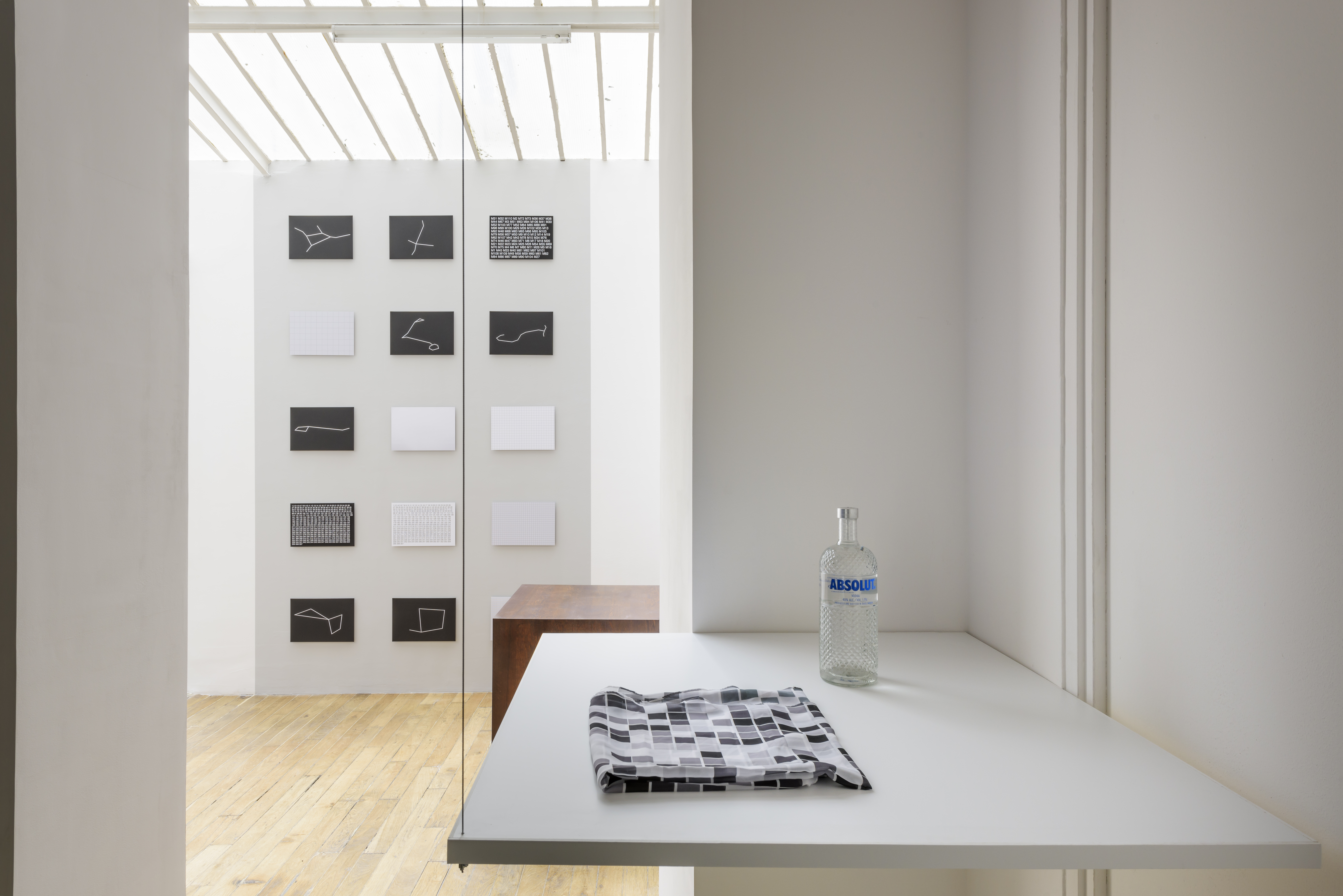At the Kölnischer Kunstverein, Snyder’s work is now being presented in a comprehensive manner for the first time in Germany. In the exhibition No Apocalypse, Not Now, whose title refers directly to Jacques Derrida’s eponymous work on nuclear end-time visions and the politics of deterrence, thirteen coordinated works provide a deeper insight into the artist’s practice.
The exhibition covers not only the central pavilion of the building, whose windows were fitted with walls especially for the project, but also the basement and the cinema hall. In the Kunstverein’s large exhibition pavilion, visitors are confronted with a total of ten film works. These works not only cover a substantial period of ten years, they also represent a central part of Snyder’s artistic work and provide a basic understanding of his practice and approach.
Snyder uses a wide variety of source material as the basis of his work, ranging from news, advertising, entertainment or amateur clips to information from public or government databases, sequences from private blogs and even self-produced images. Snyder extracts and sifts this material, subjects it to systematic investigation and taps it for its meaning and how it came about. In this way, the artist reveals and questions the mechanisms of information and image production in today’s global media world, without, however, making any judgements. The thematic fields he touches on in the course of his work encompass central questions and events of the recent past as well as the present. The relationship between images and ideologies as well as social and political systems form the artist’s overarching field of interest and research.
The cinematic works in the exhibition pavilion are shown on so-called Hantarex monitors, which, in accordance with Snyder’s artistic concept, are placed on pedestals in the room and thus, in a certain way, are combined to form an installative arrangement. The arrangement of the monitors is not hierarchical and follows the chronology of the works, with the eldest being placed at the beginning and the youngest at the end of the hall. The soundtracks accompanying the film sequences of some of the works are not coordinated with each other, so that they partly overlap.
The artist’s films are supplemented by photographs and prints, which are installed on the front walls of the hall. These works are part of Snyders Index, a project begun in 2008 that involves the systematic recording of his archive of images and data accumulated over the years for the production of the films. The aim of this undertaking is to make all his material publicly available on the Internet, while the physical sources are destroyed as a result of the transformation processes. In the context of Sean Snyder’s ongoing preoccupation with the creation and transfer of information and images, the process involved in the creation of Index can in a sense be seen as a logical consequence of his work. The films presented in the exhibition relate to the archive of images and information incorporated in Index like essences that do not necessarily mark a higher value, but rather a different manifestation.
In contrast, the photographs and prints on display represent physical products of Snyder’s preoccupation with the Index, which in this context became the starting point for entirely new works. These show, for example, storage media that the artist used for the archive and which are recorded in the manner of factual documentary photographs. Other results of the index, in turn, show close-ups and details of objects from the archive that are no longer decipherable and therefore seem quite abstract.
While the works presented in the exhibition pavilion are directly or indirectly related to Index, the works in the basement and cinema are to be viewed independently of this project. These films, which are Exhibition (2008) and Afghanistan, circa 1985 (2008 – 09), were made when Snyder had already begun work on Index and were therefore separated from the works in the pavilion. The film exhibition in the basement is based on a Soviet documentary from the 1960s and shows an exhibition of reproductions of various works of art in a Ukrainian village. On the one hand, the work addresses the ideological content of the source material used for the film and, on the other hand, provides a reflection on the institutional character of museums. In contrast, Afghanistan, circa 1985, shows the viewer an encounter between local Afghans and Soviet troops. The work is based on film footage taken during the Soviet occupation of the country in the 1970s and 1980s. At first, a sequence is played back without interruption or change, only to be recapitulated again in a slowed-down form, so to speak image by image. In this way, Sean Snyder not only succeeds in making the formulas and conventions of the representation of power of both cultural spheres comprehensible, but also in once again presenting the function and effect of images in the media age. The thematic relevance as well as the meticulousness and precision associated with Afghanistan, circa 1985 – and with the other works as well – can probably be regarded as one of the essential characteristics of Sean Snyder’s artistic practice and contribute significantly to the fact that his works have a long lasting resonance.
more